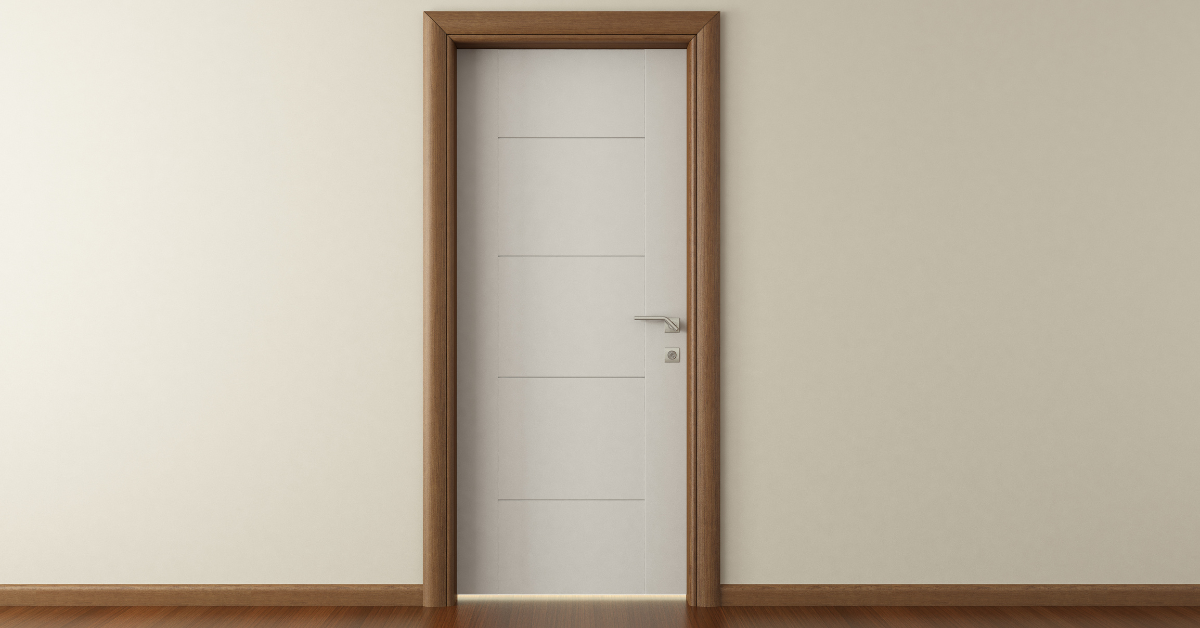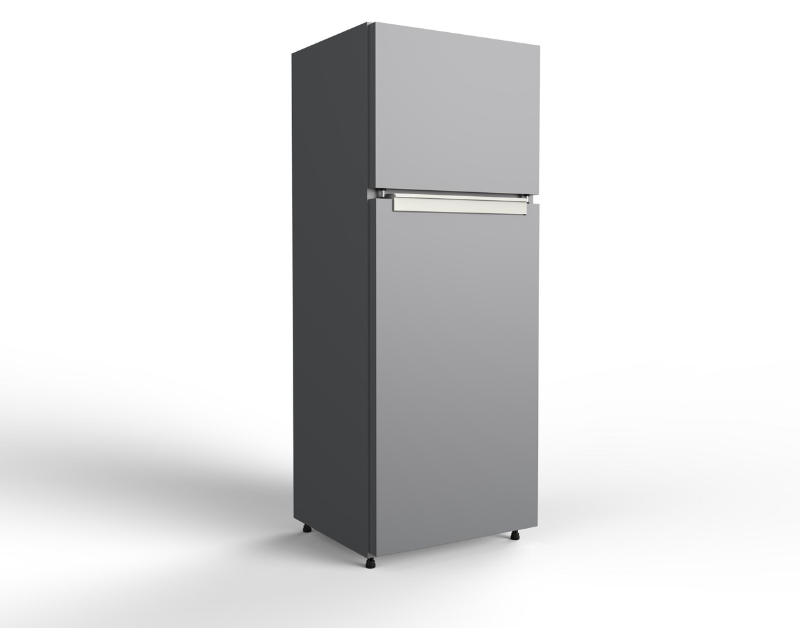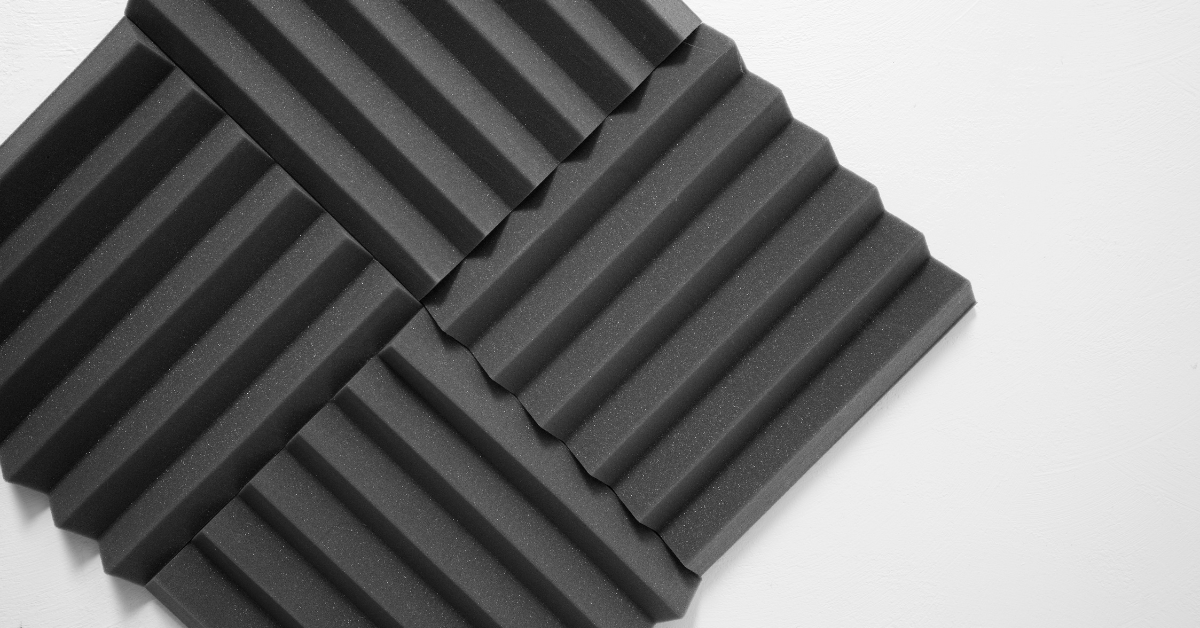Even when they are shut, doors can be gateways for sound. Fight back!
Soundproofing a door can help to create peace and privacy. It all starts with the door you choose in the first place. So, what’s the best door for soundproofing?
Skip to:
- Assessing your soundproofing needs
- Solid core door vs hollow door
- These are the best soundproofing doors
- Door soundproofing tips
Assessing your soundproofing needs
Let’s start with something that is always useful – a quick reality check. If your room is leaking sound from other areas, a door won’t completely soundproof your room.
Remember – the main objectives of soundproofing are a) to add mass and b) to fill gaps and cracks.
Installing a quality soundproof door will add mass, and significantly reduce noise coming through.
For the gaps and cracks around a door, we offer some door soundproofing tips here.
What’s important is to have realistic expectations of what a soundproof door can achieve. If you have any of the following issues, you’ll need to resolve them before you can kick back and enjoy the tranquillity:
- thin walls that haven’t been soundproofed at all
- windows that are letting in external noise
- noise coming through the ceiling from neighbors above
Click on the links above for our advice on budget-friendly solutions for these issues.
Questions to ask yourself
Before getting on to choosing the best door for soundproofing. Ask yourself these questions:
- Where will the door be installed?
- What’s my budget?
This will help you to work out which kind of door is best for you, and what you can afford.
Solid core door vs hollow door
Let’s move on to a door soundproofing fundamental.
The best doors for soundproofing will add mass to block noise. And that’s why a solid core door will always perform better than a hollow door.
Note – the sound transmission class rating (STC) rating of a hollow door is usually around 20. This means it can reduce noise transmission through the door by 20 decibels (dB). The STC rating of a solid core door is usually 35 or higher, reducing noise by 15 dB more than a hollow door.
Hollow doors
Hollow doors have an empty space within them. This lack of mass means that they allow more sound to pass through. They also allow more acoustic vibrations through, because they aren’t as effective at sound dampening.
Solid core doors
Sold core doors are manufactured from dense materials such as wood, fiberglass, and steel. These materials adds mass to the door and reduces sound transmission. Depending on the material of the door, they can also do a good job at sound dampening (reducing vibrations within the structure) and sound absorption.
Pros of a solid core door
- Effective for soundproofing – due to dense structure and higher mass
- Higher security – making it more difficult for intruders to break through
- Durability – may be more resistant to wear and tear, this also depends on the finish of the surface
- Weather resistant – can hold up better to inclement weather, bring less likely to warp
- Fire resistant – solid wood and metal core doors are naturally more resistant to fire
- High-end look – many designs are more elegant than hollow door alternatives
Cons of a solid core door
- Heavier – can be harder to shut
- Usually more expensive – due to the weight and materials used
- May still transmit sound – if you don’t seal gaps and cracks around the door
These are the best soundproofing doors
Solid wood French door (best for bedroom)
Solid core doors don’t have to be an eyesore.
Imposing metal solid core doors are best left for exterior installations. Inside your home, you’ll probably want to retain a sense of style.
You can find manufactured from solid pine wood and has an eco-veneer coating. It’s a sophisticated look, with smart panel features that make it ideal for bedrooms.
These types of doors typically have thick solid wood construction of around 40 mm. When it comes to sound attenuation, some manufacturers claim they can reduce noise by 30% compared to standard doors.
Glass steel door (best for front door)
If you are bothered by external noise at home, and want some additional security, turn your attention to your front door.
Steel solid core doors add a lot of mass to shut out external noise. The thing is, they can look a little imposing in a residential setting. That’s why steel doors combined with glass can offer a much more pleasant look for the front of your house.
These doors are often made with a single sheet of metal and an absence of weld seams. This adds to the structural integrity, and can also reduce internal condensation. Steel doors also give you protection against the weather.
A sturdy steel door will protect your home in the place you need it the most, and offer a huge increase in mass to keep out noise such as traffic and other sounds of your neighborhood.
Sound absorption blanket (best for improving acoustics)
In rooms such as recording studios, home cinemas your living room, or offices where you make calls, echoes and reverberation can ruin your audio experience and speech.
For this type of noise issue absorbing sound, rather than blocking sound, should be your priority.
Of course, having a solid core will help to stop noise coming in and out. But for improving acoustics, it’s not actually a door that usually does the job.
Sound absorption blankets fit snugly over your door, doing their job of absorbing sound, preventing it from reflecting, and making audio sound bad.
Usually made from materials such as foam and fiberglass, sound absorption blankets can go over the top of your solid core door to absorb sound waves, improving speech and audio listening.
Door soundproofing tips
A solid core door can make a significant impact on the noise coming into your room or home, cutting it by 30% or more.
However, in order to receive the full benefits of the solid core door, you must ensure that you fully soundproof your door. Once you have the best door for soundproofing, turn your attention to sealing the gaps and cracks around the door:
Add a door sweep
Door sweeps are inexpensive and effective, fitting around the bottom of your door, and sealing the gap between your door and the floor. You should be careful to buy the right door sweep for the right door.
Some sweeps may harbor moisture – particularly the U-shape sweeps – and that makes them unsuitable for exterior doors. Also, the type of surface is a concern.
You need a tight fit, but if your floor is wood or tiles, you need to ensure that the door sweep won’t damage or scratch the surface.
Read this article on How to Block Noise Under a Door (and Wake Up Rested)
Add a door threshold
You can see a door threshold as a sort of ‘reverse door sweep’.
The main difference between a door threshold and a sweep is that the threshold attaches to the floor. Each time you close your door, it will meet with the door and seal the gap underneath it.
A door threshold may be more suitable than a door sweep for you if; a) you are worried about the door sweep damaging your floor or b) you think that a door sweep looks a little clumsy and want a more subtle fitting that seals the gap while fitting in with the overall aesthetics of your room.
Add weatherstripping
After addressing the gap at the bottom of your door, what about the rest?
Weather stripping for doors, also known as perimeter gaskets, go around the top and sides of your door, sealing the gap between the door and the door frame when the door is shut.
They are usually really simple to fit. Many are self-adhesive, meaning you just have to fit them carefully along the top of the door frame and the sides (also known as jambs).
You can commonly find weatherstripping made of soundproofing material such as rolled vinyl, tubular rubber, or reinforced foam. Other, metal types of gaskets require installation with screws.






